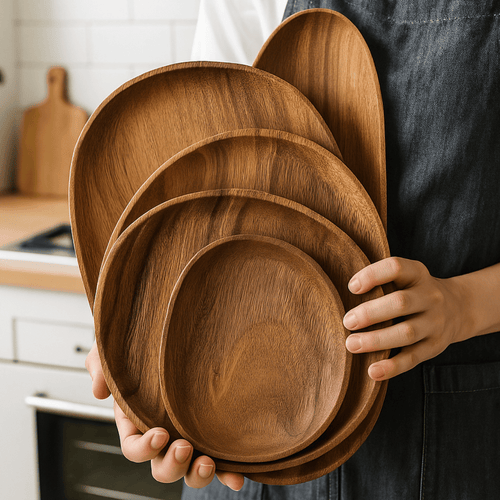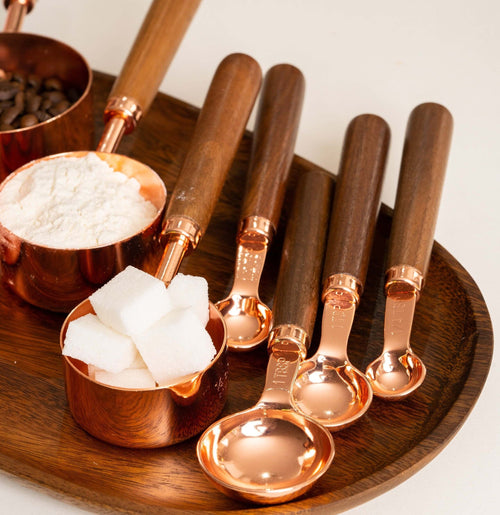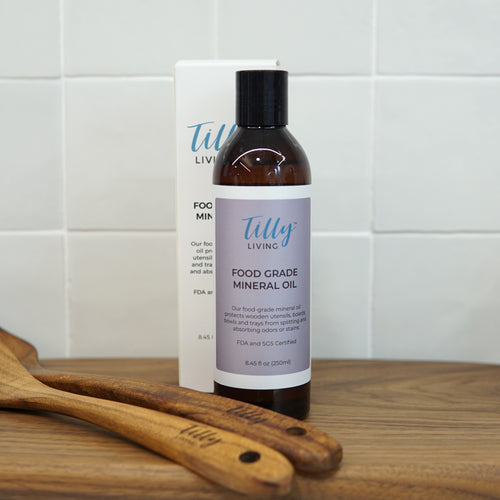Let’s face it — the kitchen is the heart of the home. But could it also be a hidden source of microplastics? Unfortunately, yes. From the tools we use to prepare our food to the surfaces we chop on every day, plastic is sneakily finding its way into our meals. Yikes!
But don't worry — this isn't a scare piece. This is your cozy guide to reclaiming your kitchen from the plastic invaders and doing it with a smile. Ready to clean up your cooking space and breathe a little easier? Let’s go!
What Are Microplastics and Why Should You Care?
Where Microplastics Come From
Microplastics are exactly what they sound like — teeny, tiny pieces of plastic, less than 5mm in size. They come from broken-down plastic products, synthetic fabrics, packaging, and, yes, even some kitchen utensils.
How They Enter Your Kitchen
Every time you cut food on a plastic board, especially one that's old or worn, small fragments can break off and cling to your food. Heating plastic? That’s another red flag. Even your dishwasher can encourage plastic breakdown.
The Hidden Microplastic Problem in Food Preparation
Plastic Utensils and Cutting Boards – The Silent Offenders
Plastic cutting boards and utensils might seem harmless, but with every chop, scrape, and stir, they could be shedding tiny bits of plastic. Those scratches on your board? They're not just cosmetic—they're warning signs.

Everyday Cooking Habits That Introduce Microplastics
Using plastic wrap in the microwave, storing hot leftovers in plastic containers, and constantly cleaning plastic items in hot water—all of these can speed up plastic degradation.
The Role of Cutting Boards in the Microplastic Puzzle
How Cheap Plastic Boards Shed Microplastics
Over time, those budget-friendly plastic boards become brittle and scarred. Each scar? A potential source of microplastic particles that hitch a ride on your salad or sandwich.
Why Wood and Natural Materials Are Safer
Wood, especially high-quality hardwoods, doesn't flake or shed plastic. Instead, it’s naturally antimicrobial, durable, and—bonus!—eco-friendly. It’s like nature’s answer to your kitchen woes.
Introducing the GrainBond Trio Chopping Board
Designed for Health & Hygiene
Meet the GrainBond Trio Chopping Board – your kitchen’s new best friend. It's made from safe, non-toxic, BPA-free materials that won’t leach microplastics into your food.
Three Boards for Smarter Cooking
With three designated boards (think veggies, meats, and fruits), you can keep cross-contamination at bay. And they all neatly nest together like a dream.
Tough on Chopping, Gentle on the Environment
Durable enough to withstand your toughest chef moves, but designed with sustainability in mind. The GrainBond is all about long-term love, not landfill waste.

Why GrainBond is a Smarter, Safer Kitchen Upgrade
BPA-Free and Microplastic-Free
No hidden nasties here. You get peace of mind knowing your food prep isn’t contributing to the microplastic mess.
Durable and Long-Lasting
The GrainBond isn’t a “use it for a year and toss it” kind of board. It’s here for the long haul, saving you money and reducing waste.
Stylish Enough to Show Off
Let’s be real: it’s a beauty. With its clean lines and practical design, it’s the kind of kitchen gear you actually want to leave on the counter.
Tips to Make Your Kitchen a Microplastic-Free Zone
Ditching Single-Use Plastics
Switch to glass containers, beeswax wraps, and stainless steel straws. Your food—and the planet—will thank you.
Choosing Quality Over Convenience
Invest in items that last, like the GrainBond or a sturdy walnut board. Not only are they safer, but they add that "grown-up kitchen" aesthetic we all secretly crave.
FAQs:
Can I see microplastics on my cutting board?
Nope, they’re too tiny to see. But that doesn’t mean they aren’t there. Scratched, worn plastic boards are the usual suspects.
Is the GrainBond safe for children’s food?
Absolutely! It’s BPA-free, non-toxic, and safe for all ages.
Do the boards slip on the countertop while cutting?
Each GrainBond board features a non-slip surface and stable grip, keeping your prep safe and hassle-free while you chop.
Are these boards knife-friendly?
Yes, absolutely! GrainBond boards are designed to be gentle on your knife edges, helping to keep your blades sharper, longer—without dulling like harder surfaces can.
How often should I replace my chopping board?
If it's plastic and scratched—replace yearly. Our GrainBond Chopping Boards last much longer with proper care.

For those dreaming of a more natural, grounded kitchen...
If you’re all about natural living, then say hello to our Walnut Wood Chopping Board. Made from 100% premium walnut, it brings rustic charm and serious function.
(Psst… there’s also a gorgeous walnut version with a handle if you love a little extra grip!)
Of course, like all good things, it deserves a little care. That’s where food grade mineral oil comes in—a quiet hero in wooden kitchenware maintenance.
Just a thin layer rubbed in every few washes keeps the wood hydrated and happy. Let it rest overnight, then buff it in the morning. Easy. Satisfying. Worth it.
Small Changes, Big Impact
Cutting out microplastics doesn’t mean flipping your life upside down. It starts with mindful swaps—like upgrading your chopping board. With the GrainBond Chopping Board, you’re not just investing in your health, you’re choosing smarter, more sustainable living.
Go on—your kitchen deserves this glow-up.








